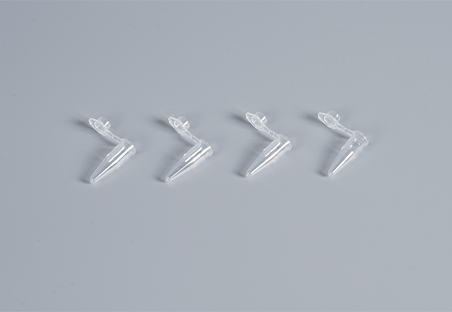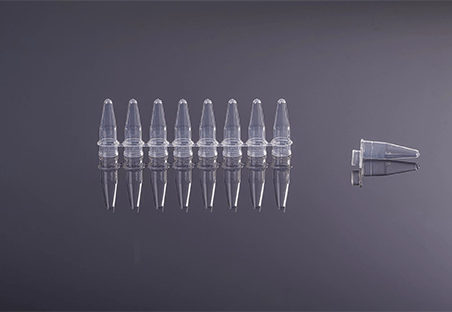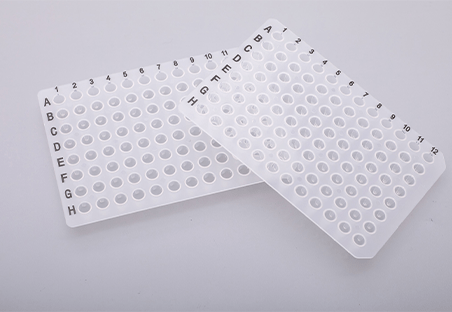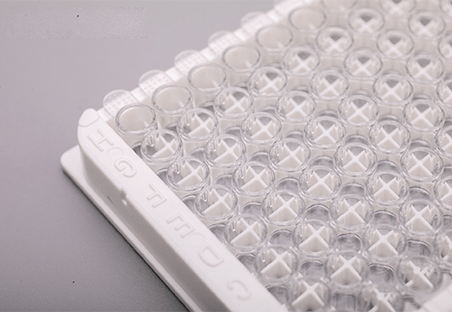In the realm of Polymerase Chain Reaction (PCR), a seemingly simple element plays a critical role in ensuring successful amplification: the PCR sealing film. This thin layer of plastic forms a vital barrier atop the reaction plate, preventing evaporation and contamination while withstanding the thermal cycling process. But beneath this seemingly basic function lies a world of variety and specific considerations. Let’s delve deeper into the types, features, and selection criteria for PCR sealing films.
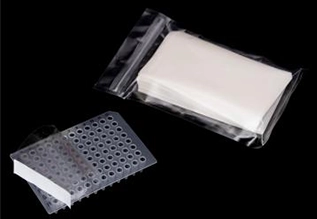
Types of PCR Sealing Films
Polymerase Chain Reaction (PCR) sealing films are essential components in PCR applications, ensuring the integrity of the reaction mixture by preventing contamination and evaporation. These films come in various types, each with its own advantages and applications. There are two main classifications of PCR sealing films based on their sealing mechanism:
1. Self-adhesive films
These are the most commonly used type of PCR sealing film. They come in a variety of materials, including polypropylene, polyester, and aluminum. They adhere to the PCR plate through a pressure-sensitive adhesive seal.
- Polypropylene(PP): These are the most economical option and are suitable for basic PCR applications. They are typically not recommended for long-term storage or real-time PCR (qPCR) due to potential evaporation and background fluorescence.
- Polyester(PET): These films offer better chemical resistance and lower background fluorescence than polypropylene films. They are suitable for qPCR applications and can be used for short-term sample storage.
- Aluminum: Aluminum sealing films provide the best barrier against evaporation and are ideal for long-term sample storage and applications requiring minimal sample loss. However, they are not optically clear and cannot be used for qPCR.
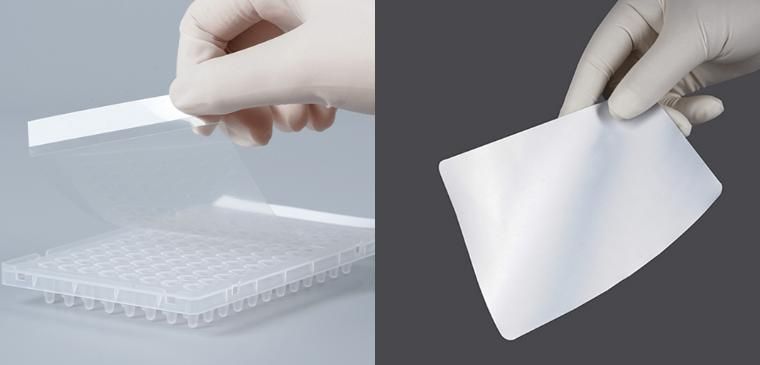
2. Heat-sealable films
These films require a heat sealer to create a bond with the PCR plate. They are less common than self-adhesive films but offer a more permanent seal. Heat-sealable films are typically made of a polymer material that melts when exposed to heat, forming a seal with the plate.
The choice of PCR sealing film will depend on the specific application. Additionally, some sealing films may include inert additives or coatings to further enhance their performance, such as anti-static coatings or inhibitors to prevent adhesive migration into PCR reactions.

Applications of PCR sealing films
The primary function of PCR sealing films is to:
- Prevent evaporation: Maintaining sample volume is critical for PCR efficiency. Sealing films prevent sample loss during thermal cycling.
- Minimize contamination: By creating a barrier, sealing films protect the reaction mixture from airborne contaminants.
- Withstand thermal cycling: The film material must endure repeated heating and cooling cycles without compromising the seal.
Beyond these core functions, PCR sealing films can be tailored for specific applications, such as real-time PCR or sample manipulation after initial sealing.
What PCR Consumables Using Sealing Films?
PCR sealing films are commonly used in conjunction with various PCR consumables to ensure the integrity of the PCR reaction. Some of the primary PCR consumables that utilize sealing films include:
- PCR Plates: PCR plates are designed to hold multiple PCR reactions in individual wells, typically arranged in a standard 96-well or 384-well format called 96 well or 384-well plate sealing film. Sealing films are applied to the top of these plates to create a tight seal, preventing contamination and evaporation during PCR amplification.
- PCR Tubes: PCR tubes are small tubes that hold PCR reaction mixtures for individual reactions. Sealing films can be applied to the top of these tubes to provide a secure seal, especially when using tubes in a PCR thermal cycler without a heated lid.
- qPCR Plates: Quantitative PCR (qPCR) plates, also known as real-time PCR plates, are used for performing quantitative PCR assays where fluorescence signals are monitored in real-time during amplification. Sealing films are applied to these plates to maintain a tight seal and prevent contamination while allowing visualization of fluorescence signals through optically clear films.
- PCR Strip Tubes: PCR strip tubes consist of multiple individual PCR tubes arranged in a single strip. Sealing films can be applied to the top of these strips to seal multiple PCR reactions simultaneously, offering convenience and efficiency, especially in high-throughput PCR workflows.
- Microplates: Microplates are multi-well plates used for various laboratory assays, including PCR. Microplate sealing film are applied to microplates containing PCR reactions to seal individual wells, ensuring uniform reaction conditions and preventing contamination or evaporation during incubation and cycling.
- Sealing Mats: Sealing mats are flexible mats with multiple perforations that align with the wells of a PCR plate or microplate. These mats are placed over the PCR plate, and sealing films are applied to cover the wells through the perforations, providing a secure seal for each reaction.
- PCR Plate Sealing Caps: Some PCR plates come with individual sealing caps or lids that fit over each well to provide a seal. Sealing films can be used in conjunction with these caps to further enhance the integrity of the seal and protect the reaction mixture from contamination and evaporation.
These PCR consumables, when combined with sealing films, ensure the reliability, reproducibility, and accuracy of PCR-based experiments across various applications in molecular biology, genetics, diagnostics, and drug discovery.
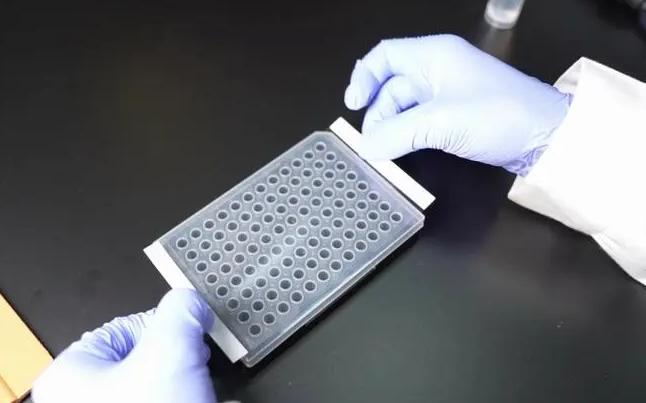
How to Select the Right PCR Sealing Films?
Choosing the right PCR sealing film requires careful consideration of several factors:
Factors Influencing Sealing Film Performance
Several factors can influence the performance of PCR sealing films, affecting their ability to create a reliable seal and protect the PCR reaction mixture. These factors include:
- Surface Properties of PCR Consumables: The surface properties of PCR plates, tubes, or microplates can significantly impact the performance of sealing films. Smooth and flat surfaces allow for better adhesion and sealing compared to rough or irregular surfaces. Compatibility between the sealing film and the surface material (e.g., polypropylene, polystyrene) is also crucial for achieving a tight seal.
- Temperature Cycling Conditions: PCR thermal cyclers subject sealing films to repeated cycles of heating and cooling, which can affect their adhesive properties and seal integrity. Sealing films must withstand temperature fluctuations without losing adhesion or shrinking, especially during prolonged or high-temperature PCR runs.
- Adhesive Strength: The adhesive strength of the sealing film determines its ability to adhere securely to the PCR plate or tube and maintain a tight seal throughout the PCR process. Insufficient adhesive strength can result in the film peeling off or lifting during thermal cycling, leading to contamination and evaporation issues.
- Compatibility with Reagents and Solvents: PCR sealing films should be resistant to degradation or dissolution when exposed to PCR reagents, solvents, or other chemicals commonly used in molecular biology applications. Compatibility with a wide range of reagents ensures that the sealing film remains intact and effective in preventing contamination.
- Puncture Resistance: Sealing films must be resistant to punctures or tears to prevent breaches in the seal caused by pipetting or piercing with robotic liquid handlers. Films with high puncture resistance maintain the integrity of the seal, minimizing the risk of contamination and sample loss.
- Optical Clarity: For real-time PCR applications, optically clear sealing films are essential to allow accurate monitoring of fluorescence signals during amplification. Sealing films should have minimal autofluorescence and distortion to ensure reliable detection of PCR amplicons without interference.
- Ease of Application and Removal: Sealing films should be easy to apply to PCR plates or tubes, with a user-friendly design that facilitates quick and efficient sealing. Similarly, films should be easy to remove after PCR amplification without leaving behind residue or damaging the PCR consumables.
- Sterility and Microbial Contamination: Sterile sealing films are necessary for applications requiring aseptic conditions to prevent microbial contamination of the PCR reaction mixture. Sealing films should be manufactured under sterile conditions and certified to be free from microbial contaminants to ensure the integrity of the samples.
- Storage Conditions: Proper storage of sealing films is essential to maintain their performance over time. Films should be stored in a clean, dry environment at the recommended temperature to prevent degradation of adhesive properties or contamination of unused films.
By considering these factors, researchers can select PCR sealing films that offer optimal performance and reliability in their specific experimental setups, ensuring accurate and reproducible results in PCR-based applications.
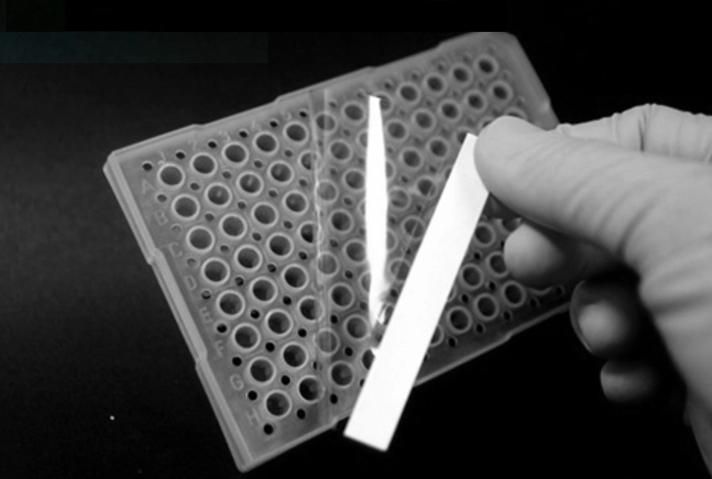
Selection Criteria for PCR Sealing Films
Selecting the appropriate PCR sealing films is crucial to ensure the success of PCR experiments and maintain the integrity of the reaction mixture. Here are some key selection criteria to consider when choosing PCR sealing films:
- Compatibility with PCR Consumables: Ensure that the sealing films are compatible with the type of PCR plates, tubes, or microplates being used. Choose films that fit the dimensions of the PCR consumables and adhere well to their surfaces to create a tight seal.
- Sealing Method: Consider the preferred method of sealing the PCR plates or tubes. Options include adhesive films, heat-sealing films, peelable films, or mats compatible with adhesive films. Select a sealing method that aligns with your workflow and equipment availability.
- Application Type: Determine the specific requirements of your PCR application. For example, if you’re performing real-time PCR and need to monitor fluorescence signals, opt for optically clear sealing films that allow visualization of the reaction. For standard PCR applications, general-purpose sealing films may suffice.
- Sample Accessibility: Consider whether you need to access the samples during or after PCR amplification. For applications requiring frequent access to the reaction mixture, such as adding reagents or sampling, peelable films or sealing caps compatible with pierceable films may be more suitable.
- Evaporation Control: Evaluate the level of evaporation control required for your PCR experiments. For long PCR runs or assays with extended cycling times, opt for sealing films with excellent evaporation resistance to minimize sample loss and maintain reaction volume stability.
- Contamination Control: Ensure that the sealing film provides an effective barrier against contamination. Look for films made from high-quality materials that are resistant to punctures, tears, and microbial ingress, especially for sensitive PCR applications where contamination can affect results.
- Sterility: Determine whether sterile sealing films are necessary for your application. In sterile environments or when working with sensitive samples, opt for sealing films that are pre-sterilized and certified to be free from microbial contaminants.
- Compatibility with Automation: If you’re using automated PCR platforms or liquid handling systems, ensure that the sealing films are compatible with your equipment. Select films that can be easily integrated into automated workflows without compromising sealing performance or causing instrument compatibility issues.
- Cost and Packaging: Consider the cost per unit and packaging size of the sealing films, especially for high-throughput applications requiring large quantities of consumables. Compare prices from different suppliers and evaluate the cost-effectiveness of purchasing in bulk or multipacks.
By considering these selection criteria, you can choose the most suitable PCR sealing films for your specific experimental requirements, ensuring reliable and reproducible results in PCR-based applications. Additionally, it’s advisable to test a few different sealing film options in your laboratory setup to determine the best fit for your needs before committing to a larger purchase.
Conclusion
In conclusion, PCR sealing films play a pivotal role in ensuring the integrity and reliability of PCR experiments by effectively preventing contamination and evaporation of the reaction mixture. This comprehensive overview has provided insights into the various types, features, and selection criteria of PCR sealing films, shedding light on their importance in molecular biology and genetic research. By understanding the specific requirements of their PCR applications and considering factors such as compatibility, sealing method, application type, and contamination control, researchers can make informed decisions when choosing the right PCR sealing films for their experiments.
Moreover, collaborating with a reputable PCR sealing film supplier is essential to access high-quality products that meet stringent performance standards and contribute to the success of PCR-based assays. As PCR technology continues to advance, the role of PCR sealing films remains indispensable.
